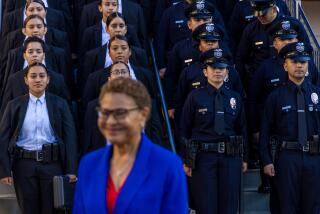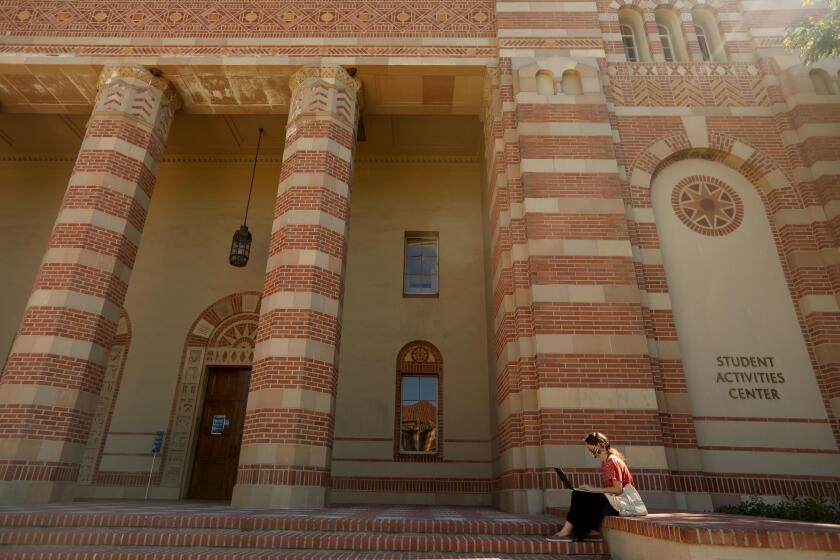Police Scandal Is Worst Since 1930s
- Share via
The Los Angeles Police Department’s expanding corruption scandal is the worst to strike the force since the 1930s--an era when mayors were crooks and L.A. cops were bagmen and bombers.
For most of the early 20th century, Los Angeles was nationally notorious for its dishonest politicians and police officers. But in 1933, when Frank Shaw, a former grocery clerk turned city councilman and county supervisor, was elected mayor, he quickly took the town’s long tradition of public corruption to a new, higher level referred to as the “Shaw spoils system.”
Los Angeles mayors, district attorneys and councilmen took campaign money and outright payoffs from madams, bootleggers and gamblers. The LAPD Central Vice Squad was on the take virtually to a man.
City contracts were awarded without competitive bidding, people in city government were paid to use designated contractors, large industries were solicited for $5,000 down payments and $500-a-month bribes to keep their enterprises open. And the Police Department was reorganized to suit Shaw with the return of his ally, former Police Chief James E. Davis.
Meanwhile, Shaw’s brother and aide, Joe, was selling LAPD jobs, the answer keys to the department’s promotional exams and hard-to-get Depression-era promotions, right out of his City Hall office.
At the same time, the Central Vice Squad roamed the city, serving as the ultimate enforcer and collector for organized vice operations and their politician patrons.
Bordello queens and their badge-bearing partners could count on the officers they paid off to give enough pre-raid warning to clear out any big-name customers. Renowned procurer Lee Francis always had chilled French champagne and Russian caviar waiting for the vice officers when they arrived. And the little black book of Ann Forrester, dubbed the “Black Widow,” was filled with names not only of the city’s business elite, but also of LAPD’s command staff.
How long Shaw and his buddies in blue might have continued their party is anybody’s guess. But their nemesis arose in the person of the courageous, square-jawed Clifford Clinton, a little-known restaurateur, and a former LAPD detective turned private-eye, Harry Raymond.
Clinton, owner of cafeterias that bore his first and last names, organized CIVIC (Citizens Independent Vice Investigating Committee) that affiliated 500 business, church and public organizations. He and two others filed a grand jury report in 1937 that charged Shaw and other members of his administration with corruption.
For this, Clinton was vilified by Shaw, Davis, Dist. Atty. Burton Fitts and the grand jury foreman, who called him “Public Enemy No. 1.” Clinton’s taxes were raised almost $7,000 a year, his family was threatened and his cafeterias were stink-bombed.
Growing ever more uneasy over Clinton’s efforts, the LAPD’s “red squad,” long the downtown establishment’s weapon against union organizers, bombed the reformer’s Los Feliz home on Oct. 18, 1937. A few months later, Lt. Lynne Kynette of the red squad blew up Raymond’s car, riddling his body with wounds. The detective, however, lived to testify against City Hall, causing something of an explosion himself.
The bombings by the mayor’s police allies so outraged the public that they voted Shaw out of office in one of the first recalls of a big-city mayor in U.S. history. Kynette was sentenced to two years to life in San Quentin for attempted murder. Davis and 23 other high-ranking LAPD officers were forced to resign.
Gamblers and racketeers, once mainstays of the downtown economy, left Los Angeles for the drier but greener pastures of Las Vegas.
More to Read
Sign up for Essential California
The most important California stories and recommendations in your inbox every morning.
You may occasionally receive promotional content from the Los Angeles Times.










